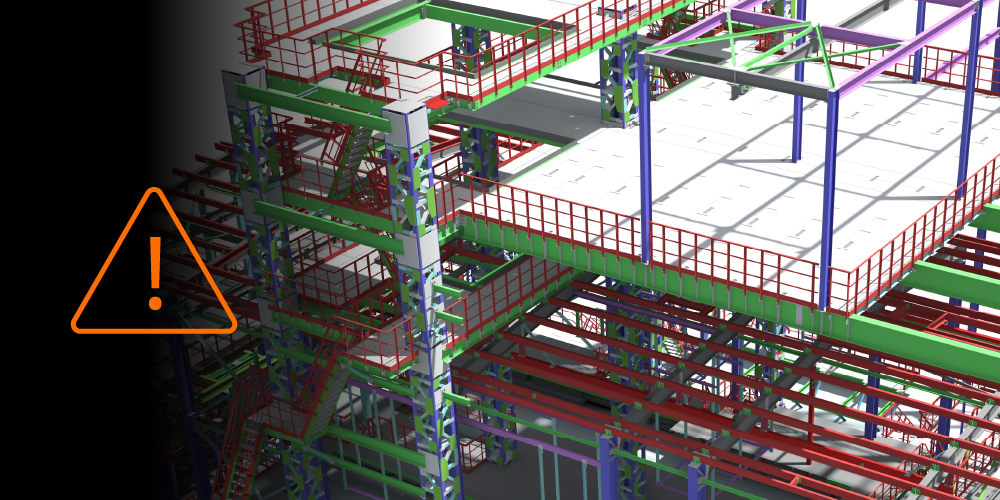Related Articles
— 5 min read
From Workarounds to Workflow: Solving Construction’s Legacy Job-Costing System Challenges with Next-Gen Tools


Last Updated Nov 26, 2025

Shauna Hurley
Shauna is never short of questions when it comes to construction, tech and science. A professional writer, researcher and podcast producer, she loves sitting down with industry insiders for in-depth interviews that uncover the latest developments, debates and emerging trends. Having worked with organisations like Microsoft and the European Bank of Reconstruction, Shauna joined Procore to explore the complex issues facing construction and share fresh, research-rich insights that help professionals navigate a rapidly evolving industry.
Last Updated Nov 26, 2025

In this three-part series, Quantity Surveyor turned Financial Solutions Specialist Clint Burgess uncovers the real-world gains for people, processes, and profits when businesses move from legacy to next-generation Enterprise Resource Planning (ERP) and Job Costing systems.
In the first part of this series, Quantity Surveyor turned Financial Solutions Specialist Clint Burgess uncovered how next-generation Enterprise Resource Planning (ERP) systems are helping construction teams reclaim time, improve visibility and strengthen control across finance, project management and operations.
Here, he shares the other side of the story — the ongoing costs of sticking with legacy systems. From slow, fragmented processes to rising risk and shrinking margins, Clint breaks down how outdated technology holds businesses back, and how next-generation job costing and ERP systems are helping teams turn individual challenges into measurable, collective gains.
“Across the industry, we see talented teams working around the limits of systems built for another era,” Clint says. “The effort people put in is often extraordinary, but the technology underneath them hasn’t kept pace with the way construction operates today — faster projects, tighter margins and an ever-greater demand for connected data, automation and real-time insights.”
Drawing on his work with builders, owners and finance leaders across the industry, Clint identifies three critical issues rooted in legacy ERP systems and the practical steps forward-thinking businesses are taking to solve them.
Table of contents
The Hidden Costs and Risks of Manual Workarounds
The Problem
“When core systems can’t support how projects really run, people build workarounds because the project has to move forward,” Clint explains. “That’s where the risk starts. Variation tracking ends up in spreadsheets, approvals in email chains, and financial data in side files. Each project develops its own ‘workaround culture’, which multiplies manual effort and increases the risk of error or non-compliance.”
The Solution
Next-generation ERP and Job Costing systems connect finance and project data in one live workflow. Approvals happen inside the system, not across inboxes, and information updates automatically between teams.
“When systems talk to each other, you remove the friction,” Clint says, “Instead of chasing information, people can act on it. The result is faster reporting, fewer mistakes and compliance that’s built into everyday operations — not bolted on afterwards.”
2 Siloed and Fragmented Data: The Barrier to Real Visibility
The Problem
Legacy systems trap information inside siloed databases that are difficult and often costly to access. They can’t and won’t integrate with newer, more advanced tools and systems. Finance sees one version of the truth, project teams another, and leadership only gets the full picture once reports are manually stitched together at month-end. Contract Administrators can spend days rebuilding data sets, while Commercial Managers may lose an entire week compiling portfolio summaries.
“It’s not that the data isn’t there,” Clint notes. “It’s that it’s locked away in systems few people can access or extract from. With next-generation platforms, that changes completely because information flows seamlessly between project and finance teams. You can instantly see which subcontractor is generating the most variations or where risk is building across projects — insights that might otherwise take weeks to uncover, if they’re found at all.”
The Solution
Next-gen systems remove these barriers by connecting information securely and automatically across tools. They do this through APIs — secure digital gateways that enable different systems to share data in real time — and cloud-based platforms that keep it accessible wherever teams are working.
The result is a single, accurate, real-time view of performance that everyone can rely on from site to office to boardroom.
“When everyone’s working from the same live data,” Clint says, “reporting stops being a month-end scramble and becomes part of how the business operates every day. That continuous, connected flow of information builds confidence in the numbers, eliminates duplication and supports faster, evidence-based decisions across every project.”
Ageing Systems, Inaccessible Data: The Cost of Standing Still
The Problem
Many legacy ERP systems haven’t had a major update in years. Interfaces look and feel dated, workflows are rigid, and vendor support may be discontinued or has shifted to newer products. The result is software that’s slow, complex and often frustrating to use – especially for new team members who can take up to six months to learn how to use it.
“We still see systems designed decades ago for accounting teams, not for today’s connected project environment,” Clint says. “It’s tough for hardworking people who just want to get the job done. That frustration quickly turns into business risk: training takes longer, adoption lags and skilled professionals — especially newer talent who expect intuitive, mobile tools — disengage. For leadership, that becomes a strategic issue. Productivity stalls and innovation is basically blocked.”
The Solution
Next-generation ERP systems are designed to evolve continuously and integrate seamlessly. They’re cloud-based, user-friendly and updated to keep pace with how construction teams work today. Mobile access boosts engagement, while open integrations unlock emerging capabilities such as AI automation and predictive analytics.
“Ease of use isn’t just about convenience or a better-looking design,” Clint adds. “It’s about competitiveness. If your systems make work harder, more time-consuming and less rewarding, your best people will eventually look to competitors offering best-in-class tools and a more innovative environment.”
Why This Matters
Manual workarounds, inaccessible data and ageing software all underscore the major issue: systems built for the past don’t and won't support the future.
“As we’ve seen, the cost of standing still keeps rising,” Clint concludes. “The most competitive businesses are those replacing complexity with connection — freeing their teams to focus on what really drives results.”
By the Numbers — From Legacy Costs to Next-Gen Gains
| Metric | Legacy Systems | Next-Gen Platforms | Business Impact |
|---|---|---|---|
| Admin hours per month (per team 1x CA, 1x PM) | 180 hrs | 45 hrs | 75% reduction in time spent |
| Admin cost per month | $18,000 | $4,500 | 75% lower operating cost |
| Average time to produce portfolio financial reports | 32 hrs | 8 hrs | 75% time saving |
| Time to process variation | 5 days | 2 days | ~60% faster turnaround |
Indicative averages drawn from real-world client feedback across project, commercial, and finance teams. Actual results vary by business size and system maturity.
“Once you measure the effort lost to chasing data and individual manual workarounds, the impact becomes clear,” Clint says. “Automation doesn’t just streamline processes — it frees up capacity that can directly improve productivity and profitability.”
Next up: Ready to move? In part 3, Clint shares his insights on how to prepare for the shift from legacy to next-gen systems, including five key considerations to kick-start the transition with clarity and confidence.
this is part of the series
The Next Generation of Job-Costing
Categories:
Written by


Shauna Hurley
Shauna is never short of questions when it comes to construction, tech and science. A professional writer, researcher and podcast producer, she loves sitting down with industry insiders for in-depth interviews that uncover the latest developments, debates and emerging trends. Having worked with organisations like Microsoft and the European Bank of Reconstruction, Shauna joined Procore to explore the complex issues facing construction and share fresh, research-rich insights that help professionals navigate a rapidly evolving industry.
View profileExplore more helpful resources

Managing Direct Costs in Construction: How Visibility Drives Profitability
Direct costs define the financial reality of every construction project. They cover the labour, materials, and equipment that drive delivery and determine profitability. But even the best-planned budgets can shift...

BIM Clash Detection: Reducing Rework, Delays, and Risk in Construction
Design clashes can be a significant hidden cost in construction, as each conflict between systems risks expensive rework, project delays, and reduced margins. BIM clash detection empowers teams to identify...

Next-Gen Job-Costing: Ready to Move? 5 Things to Consider Before You Get Started
In this three-part series, Quantity Surveyor turned Financial Solutions Specialist Clint Burgess uncovers the real-world gains for people, processes, and profits when businesses move from legacy to next-generation Enterprise Resource...

From Legacy Job-Costing Systems to Next-Gen Tools: Delivering Gains for People, Processes and Profits Across Construction
In this three-part series, Quantity Surveyor turned Financial Solutions Specialist Clint Burgess uncovers the real-world gains for people, processes, and profits when businesses move from legacy to next-generation Enterprise Resource...
